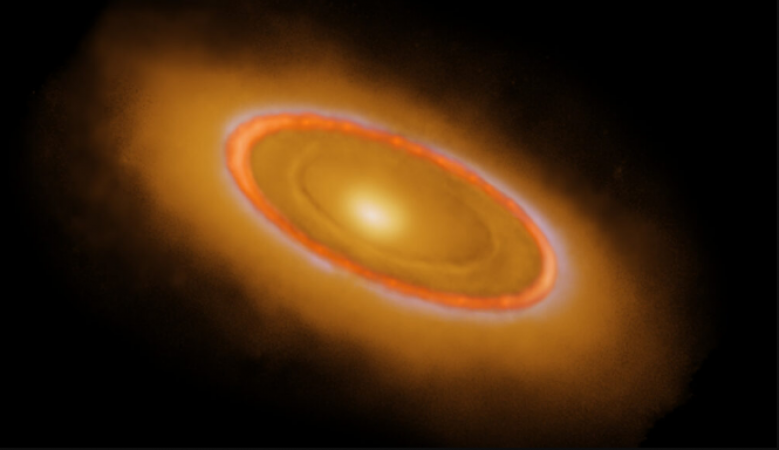
USA: Since it began operations, the James Webb Space Telescope (JWST) has offered breathtaking glimpses of the cosmos. With the ability to see infrared light, Webb occasionally astounds us with astounding observations that give us fresh perspectives on the cosmos. Here, we examine a few of the potent space observatory's most recent discoveries.
The complex asteroid belt's inner belts have just been discovered by Webb, and they are the first infrared objects ever discovered outside of our solar system.
Around 25 light-years away from Earth, a young, hot star named Fomalhaut is surrounded by this strange ring system of dust. The three nested belts that make up the asteroid system span a distance of 23 billion kilometres.
According to the most recent Webb discoveries, the Fomalhaut rings are more intricate than the Kuiper Belt, a ring of icy objects beyond Neptune, and the main asteroid belt, which is located between Jupiter and Mars. The outermost belt of Fomalhaut's ring system has already been photographed by the Hubble Space Telescope, Herschel Space Observatory, and the Atacama Large Millimeter/submillimeter Array (ALMA).
Also Read: Chandrayaan-3 and ADITYA-L1 are two space missions that ISRO is preparing to launch
Just 650 million years after the Big Bang, Webb captured images of seven galaxies that are a part of a massive developing galactic cluster late last month.
The Coma Cluster, dubbed "a monster of the modern universe" by NASA, is expected to grow in size and mass to resemble this galaxy cluster. This discovery will enable astronomers to comprehend the evolution of the universe 13.8 billion years ago.
Also Read: These are the precautions you can take today to prevent online fraud
Takahiro Morishita of IPAC-California Institute of Technology said, "This is a very special, unique site of accelerated galaxy evolution, and Webb gave us the unprecedented ability to measure the velocities of these seven galaxies and confidently confirm that they are bound together in a protocluster.
A supernova remnant known as Cassiopeia A was captured by Webb earlier in April, providing previously unseen details. Supernovas are stellar explosions that are bright and powerful. According to NASA, Cassiopeia A is the galaxy's newest known remnant of a massive star that is exploding. It was created by a stellar explosion that was visible from Earth 340 years ago, and the discovery helps astronomers understand supernovas better.
Supernovas emit material that is dispersed throughout galaxies and serves as the raw material for the creation of new star and planet generations.Cassiopeia A "represents our best opportunity to look at the debris field of an exploded star and run a kind of stellar autopsy to understand what type of star was there beforehand and how that star exploded," according to Danny Milisavljevic from Purdue University.
Also Read: upcoming technologies that will alter how we live in the future
Webb unveiled a stunning new image of the gas giant Uranus in April as well. The planet's rings and the characteristics of its atmosphere are depicted in the image. The smallest dusty rings on Uranus, which have only been imaged by two other facilities, could be resolved by Webb. According to NASA, one is the Voyager 2 spacecraft, which passed by Uranus in 1986, and the Keck Observatory.
Webb contributed to the temperature measurement of TRAPPIST-1 b, a rocky exoplanet, in March. Webb's onboard MIRI instrument calculated the exoplanet's thermal emissions, or heat energy released as infrared light.
This is the first time that any kind of light from an exoplanet as small and as cool as the rocky planets in our own solar system has been discovered, according to the researcher.
According to Thomas Greene, the lead author of the study, "No previous telescopes have had the sensitivity to measure such dim mid-infrared light." Researchers could use the discovery to better understand "whether planets orbiting small active stars like TRAPPIST-1 can sustain atmospheres needed to support life."